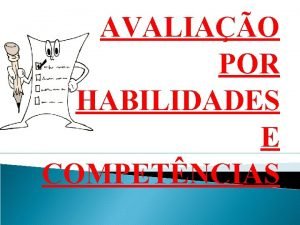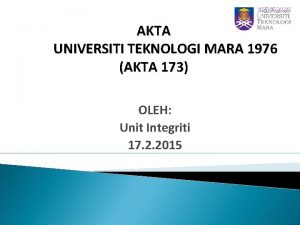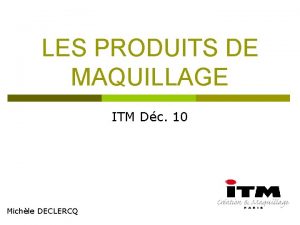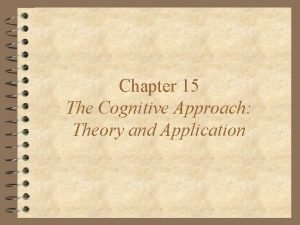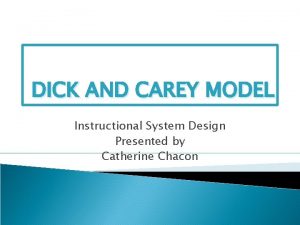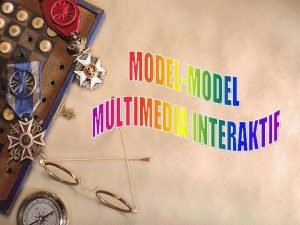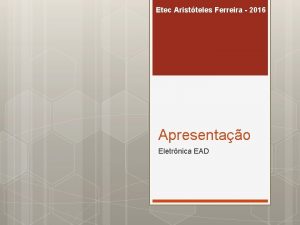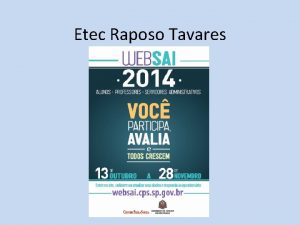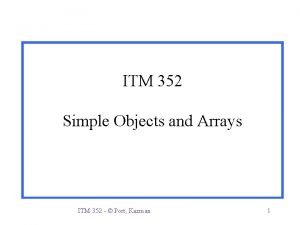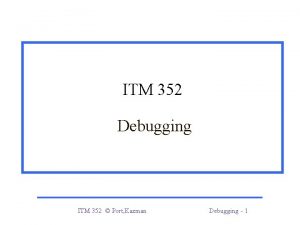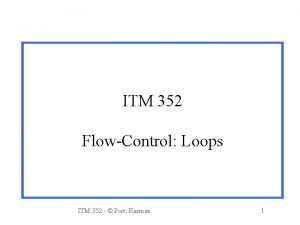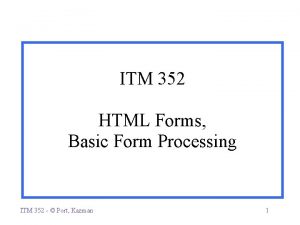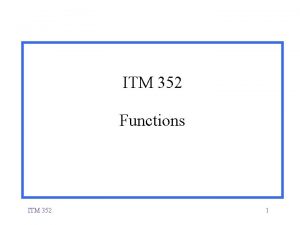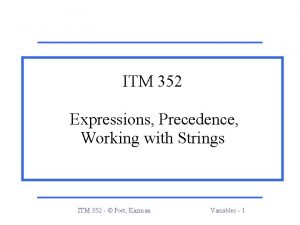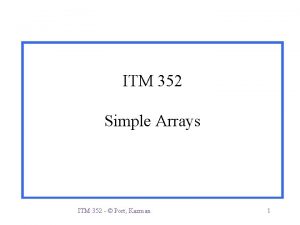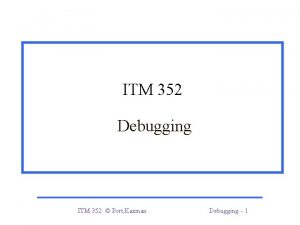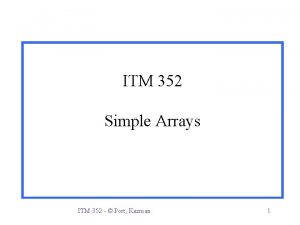Instructional Training Model ITM Lisa Muldrew ETEC 5243




















- Slides: 20

Instructional Training Model (ITM) Lisa Muldrew ETEC 5243 Instructional Design Theory and Models

Recap of Theory My ID model is based on the Behavioral Theory of Learning. n This is where learning involves alterations in modifications in behavior n Makes use of negative reinforcers to end unwanted behavior and positive reinforcers to strengthen wanted behavior.

Recap of Theory n One of the best-known aspects of behavioral learning theory is classical conditioning. n classical conditioning is a learning process that occurs through associations between an environmental stimulus and a naturally occurring stimulus.

Classical Conditioning for Instructors n n n Create a positive classroom environment. Treat students with respect and dignity. When a particular subject or task arouses anxiety in students; present the material in a non- threatening, supportive manner. -Present it slowly and gradually

ID Model Instructional Training Model Identify Potential Learners Identify Training Needs Delivery Strategies -Location -Time Analyze Training Material Delivery Methods -Technology Evaluation - Analysis of Feedback

ID Model The Instructional Training Model (ITM) Consist of six stages… n n n Identify Potential Learners Identify Training Needs Analyze Training Material Delivery Strategies Delivery Methods Evaluation

ID Model Instructional Unit COPA Instructional Training Manual Arkansas Better Chance for School Success

COPA Training n COPA stands for Child Outcome Planning & Administration. It is a Web-based software system. n Designed to train employees on how to log-in and use the COPA training system. n This is a four hour training session Official Website: www. Arkansas. mycopa. com

Example of Manual…Enrollment Information requested by COPA: First and Last name Social Security Number Date of Birth Application Date Gender Education Level of caregiver Employment Status Home Address (street, city, state, and zip)* Number in family and household To begin the application process, select the Enrollment tab Enrollment On the navigation bar The Enrollment tab is not a list of enrolled children. It is where you fill out the Enrollment Application for new families and children, manage the Eligibility Waiting List, class Assignment and Terminated Children. *Click on -Next, select Regular Enrollment for Early Head Start/Head Start *Enter information for caregivers. -Application Date will default to the current date. Change this date if necessary. When finished, click the Submit to save the information. Page 4

COPA Training Some of the applications of the software include… n Application Eligibility n Family and Child Information n Waiting Lists n Rosters, Transfers, Terminations, Child Attendance, and Reports

Goals… n To increase the knowledge and skills of Early Childhood employees as it relates to logging into COPA and completing the online application process. n To meet the needs of the families that is being entered into the system while training staff within each organization.

Target Audience n State Agencies, Childcare centers and anyone who works with families that have children between the ages of 3 to 5 years old.

Integration of ID Model Stage 1: Identify Potential Learners n Provide a nurturing environment n Identify who needs the training and why? n Identify what type of learners are in the training. Example: Training has visual slides as well as hands-on activities for different kind of learners

Integration of ID Model Stage 2: Identify training needs n Conduct a task analysis on material n All material is cohesive between the required and existing skills of participants.

Integration of ID Model Stage 3: Analyze Training Material n Review all training material such as training manual n Material presented by instructor that went through COPA training n Researched effectiveness of material from original program

Integration of ID Model Stage 4: Delivery Strategies n The location and times are addressed before the actual training. n Pre-registration process before training so participants can sign security agreement and receive ID for log-in

Integration of ID Model Stage 5: Delivery Methods n The technology used will be the internet n The style of teaching is lecture with the use of Power. Point slides and hands-on activities throughout the training

Integration of ID Model Stage 6: Evaluation n An analysis of feedback will be conducted -Frequently Asked Questions (Q & A) -Training Evaluation completed -Annual site evaluations

Integration of ID Model Creating the ID Model was easy, but implementing it into instruction was a little tough at first.

The End… Thank You!!!
 Moodle viterbo
Moodle viterbo Notas da etec mb b r i
Notas da etec mb b r i Cse 5243
Cse 5243 5243-2126
5243-2126 Ion itm
Ion itm Itm monitoring tool
Itm monitoring tool /index2.php?include= si|e: itm
/index2.php?include= si|e: itm Itm giurgiu contact
Itm giurgiu contact Akta uitm 173
Akta uitm 173 Network topology generator
Network topology generator 27 aprilie ziua internationala
27 aprilie ziua internationala Itm maquillage
Itm maquillage Thought stopping
Thought stopping Self-instructional training example
Self-instructional training example Dynamic instructional design model
Dynamic instructional design model Why is assure model important in teaching and learning
Why is assure model important in teaching and learning Kemp design model
Kemp design model Dick and carrey
Dick and carrey Arcs model
Arcs model The bscs 5e instructional model: creating teachable moments
The bscs 5e instructional model: creating teachable moments Contoh model instructional games
Contoh model instructional games

